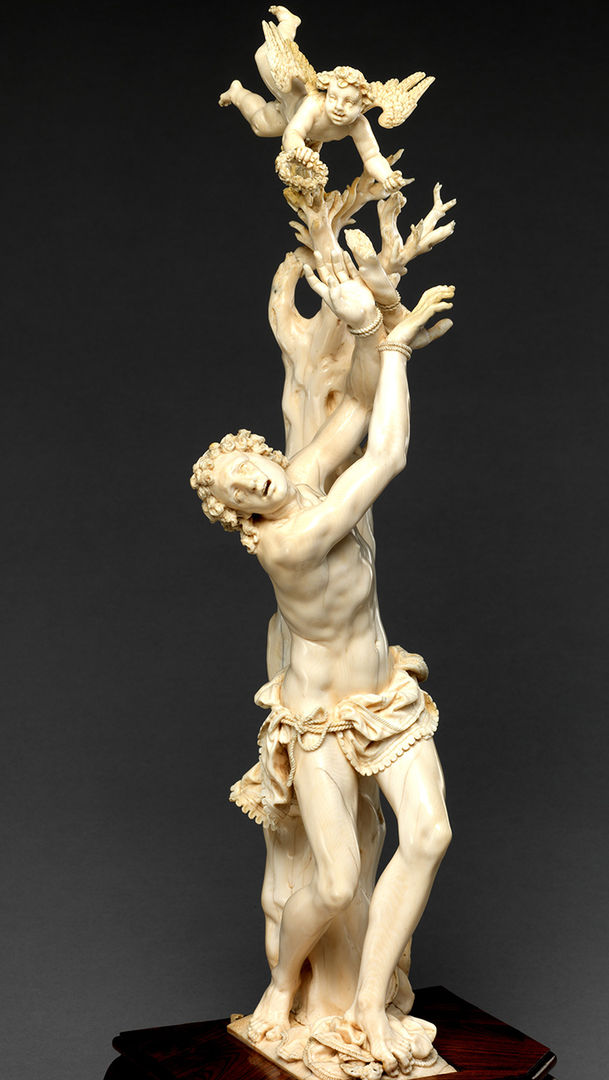Saint Sebastian

Master of the Furies (Austrian). Saint Sebastian, 17th century. Ivory and kingwood socle. The Metropolitan Museum of Art, New York, Purchase, European Sculpture and Decorative Arts Fund, Walter and Leonore Annenberg Acquisitions Endowment Fund, and Mr. and Mrs. J. Tomilson Hill and Hester Diamond Gifts, 2013 (2013.36).
Saint Sebastian is shown hovering between life and death, casting off his worldly existence as his soul rises to Heaven. He weeps and his toes curl agonizingly around the weapons at his feet. His hands, still tied together but miraculously released from the tree, flutter like wings toward a flying cherub holding out the wreath of victorious martyrdom. The weaponry signals Sebastian's membership of the guard who protected the pagan emperor Diocletian. The emperor ordered Sebastian shot through with arrows, condemned to die for his Christian faith. The emotional richness of the sculpture and virtuoso carving of this exotic material are characteristic of the style of the artist known as the Master of the Furies, named after an ivory statuette of a vengeful Fury in the Kunsthistorisches Museum, Vienna.
"How much skill, time, and focus went into getting one simple moment of human gesture?"
—Bill T. Jones, choreographer and director
"I’m moved by St. Sebastian’s bound hands as symbols of linguistic oppression."
—Emmanuel von Schack, educator and ASL user
"It moves from a clinging to life at the bottom to an acceptance of death and redemption at the top."
—Luke Syson, curator
All voices: Luke Syson, curator; Emmanuel von Schack, educator and ASL user; Bill T. Jones, choreographer
Transcripts: The Body as High Drama (Video), Hands: Silent Yet Speaking (Video)